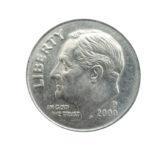 In 2014, the World Federation of Advertisers conducted a study which demonstrated that “only fifty-four cents of every media dollar in programmatic digital media buying” goes to the publisher, with the balance being divvied up by agency trading desks, DSPs and ad networks.
In 2014, the World Federation of Advertisers conducted a study which demonstrated that “only fifty-four cents of every media dollar in programmatic digital media buying” goes to the publisher, with the balance being divvied up by agency trading desks, DSPs and ad networks.
Fast forward to the spring of 2016 and a study by Technology Business Research (TBR) suggested that “only 40% of digital buys are going to working media.” TBR reported that 29% went to fund agency services and 31% to cover the cost of technology used to process those buys.
Where does the money go? For programmatic digital media, the advertiser’s dollar is spread across the following agents and platforms:
- Agency campaign management fees
- Technology fees (DMP, DSP, Adserving)
- Data/Audience Targeting fees
- Ad blocking pre/post
- Verification (target delivery, ad fraud, brand safety)
- Pre-bid & post-bid evaluation fees
It should be noted that the fees paid to the above providers are exclusive of fees and mark-ups added by SSPs, exchanges or publishers that are blind to both ad agencies and advertisers. What? That is correct. Given the complex nature of the digital ecosystem, impression level costs can be easily camouflaged by DSPs and SSPs. Thus, most advertisers (and their agencies) do not have a line-of-sight into true working media levels…even if they employ a cost-disclosed programmatic buying model (which is rare).
Take for example the fact that a large preponderance of programmatic digital media is placed on a real-time bidding or RTB basis, and a majority of that, is executed using a second-price auction methodology. With second-price auctions, the portion of the transaction that occurs between a buyer’s bid and when the clearing price is executed without advertiser or agency visibility, thus allowing exchanges to apply clearing or bid management fees and mark-ups as they see fit. So for example, if two advertisers place a bid for inventory, one at $20 per thousand and the other at $15 per thousand, the advertiser who placed the higher bid of $20 would win, but the “sale price” would be only one-cent more than the next highest bid, or $15.01. However, advertisers are charged the “cleared price,” (could be as high as $20 in this example) which is determined after the exchange applies clearing or bid management fees. How much you ask? Only the exchanges know and this is information not readily shared.
Earlier this month Digiday ran an article entitled, “We Go Straight to the Publisher: Advertisers Beware of SSPs Arbitraging Media” which profiled a practice used by supply-side platforms (SSPs) that “misrepresent themselves.” How? By “reselling inventory and misstating which publishers they represent.” The net effect of this practice allow the exchanges an opportunity to “repackage and resell inventory” that they don’t actually have access to for publishers that they don’t have a relationship with.
Let’s look beyond programmatic digital media. Consider the findings from a Morgan Stanley analyst, reported in a New York Times article in early 2016 that stated that, “In the first quarter of 2016, 85 cents of every new dollar spent in online advertising will go to Google or Facebook.” What is significant here is that until very recently, these two entities have self-reported their performance, failing to embrace independent, industry accredited resources to verify their audience delivery numbers.
The pitfalls of publisher self-reporting came to light this past fall when Facebook was found to have vastly overstated video viewing metric to advertisers for a period of two years between 60% and 80%.
By the time one factors in the impact of fraud and non-human viewing, and or inventory that doesn’t adhere to digital media buying guidelines and viewability standards, it’s easy to understand the real risk to advertisers and the further dilution of their digital working media investment.
Advertisers have every right to wonder what exactly is going on with their digital media spend, why the process is so opaque and why the pace of industry progress to remedy these concerns has seemingly been so slow. Sadly, in spite of the leadership efforts of the Association of National Advertisers (ANA), The World Federation of Advertisers (WFA), The ISBA, The Association of Canadian Advertisers and the Interactive Advertising Bureau (IAB) there is still much work to be done.
The question that we have continually raised is, “With advertisers continuing to allocate an ever increasing level of their media share-of-wallet to digital, where is the impetus for change?” After all, in spite of all of the known risks and the lack of transparency, the inflow of ad dollars has been nothing short of spectacular. According to eMarketer, digital media spend in the U.S. alone for 2016 eclipsed $72 billion and accounted for 37% of total media spending.
There are steps that advertisers can take to both safeguard and optimize their digital media investment. Interested in learn more? Contact Cliff Campeau, Principal of AARM | Advertising Audit & Risk Management at ccampeau@aarmusa.com for a complimentary consultation. After all, as Warren Buffett once said:
“Risk comes from not knowing what you’re doing.”
